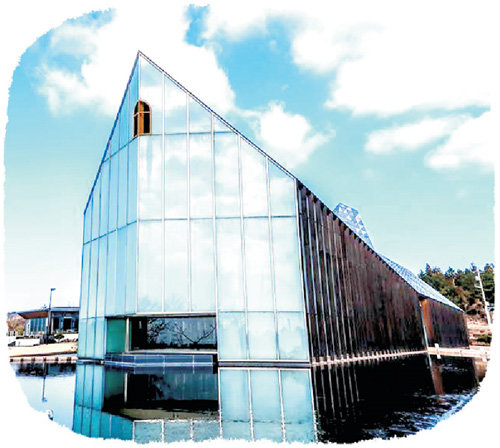Modesty in architectural aesthetics
Modesty in architectural aesthetics
Posted October. 02, 2019 07:42,
Updated October. 02, 2019 07:42

“His nationality is Korean. His Korean name is Yoo Dong-ryong. However, he used to live under the name Jun Itami as an architect in Japan for most of his life. The loner was ostracized from both communities. He was my father.”
World-famous architect Yoo Dong-ryong is widely known as Jun Itami, which was named after an airport near Osaka, Itami, and a letter from Korean musician Gil Ok-yoon’s Japanese name, Jun. The remark above was made by his son, Yoo E-hwa, who is also an architect. More specifically, it is taken from the preface of his father’s last essay book in Korean version “The vestiges of the hand” (translated titled).
It hints that Yoo E-hwa feels sorry that his father led a difficult life as an overseas Korean citizen in Japan. Ironically, his ego as an alien served as a source of inspiration for Jun Itami’s architecture and arts. As a diaspora, he lived an existential life based on relationships with people around him. This led him to put special focus on interaction. Landscape, sceneries and regional context matter most in his architecture wherever his project is built up. Fundamentally, architecture is an act of intervening in nature. However, Itami hoped it to be a part of nature, as if it had always been so.
The Bangju Church project on Jeju Island talks about relationship and interaction. He aimed to make sure that the project goes in harmony with water, wind, stone, trees, light and skies. His desire for interaction is represented by his design principle of allowing light and the outside environment to come inside over the water by arranging wooden and glass elements in line. Opaque solid walls do not divide indoor and outdoor space. Only a closer look at the church tells that the image of a cross is embedded in the building. You may not learn that it is a church until you are informed in advance. This all comes from his will to practice modesty and interaction. Inspired by Noah's ark, he intended to design a humble and interaction-centered project as part of its surroundings. It is the result of humility and modesty in architectural aesthetics.
For such reason, it seems that the ark, which sits on a hill at Seogwipo’s Andeok village, heals the souls of islanders who have weathered the sufferings of modern history. This may allow the Jeju people to embark on a new voyage leaving behind the painful past stained with tears.







